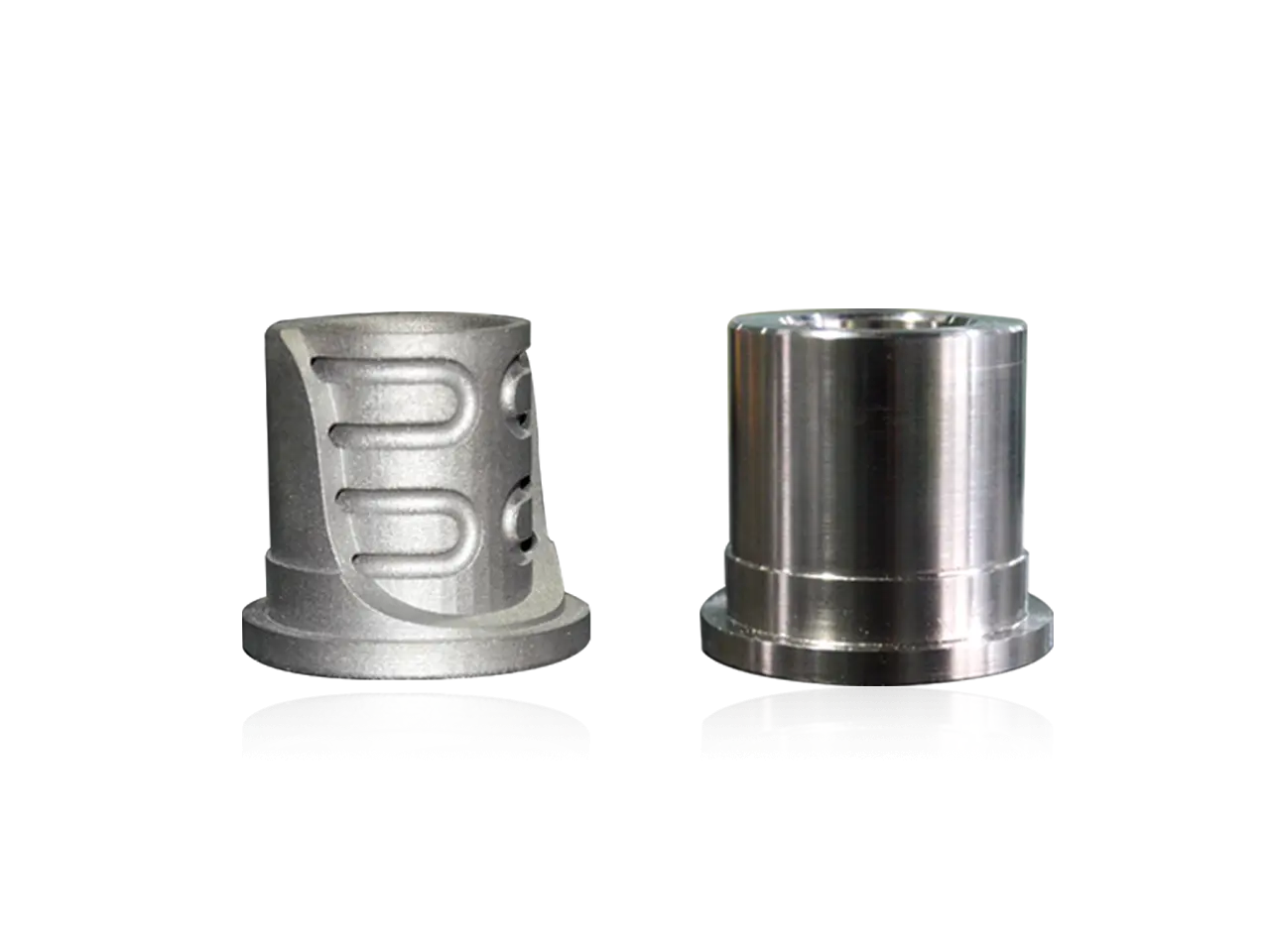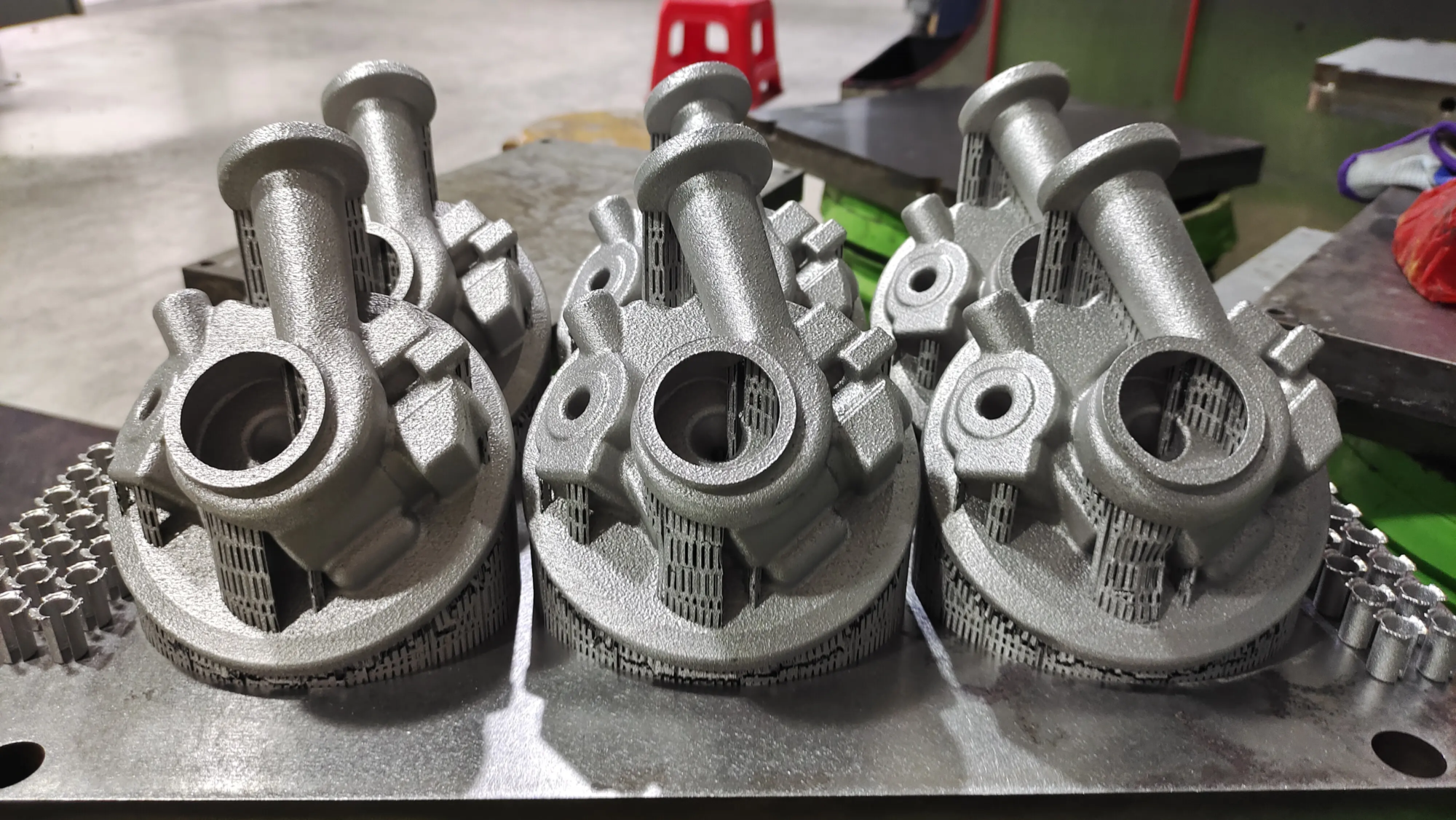In recent years, 3D metal printing has grown quickly, which makes it possible to make complex structures and high performance parts. There are many technologies that support this development, including the fusion of the powder bed (PBF), the Direction of Directional Energy (DED), the binder jet, etc. Among them, the fusion of a powder is one of the most used processes.
In the general category of the fusion of the powder bed, it is mainly divided into two different technologies. The central difference is that the heat sources used are different: the fusion of the laser powder (L-PBF) and the fusion of the electron beam (EBM). Their basic principles are the same – placing a layer of metal powder on the print platform, melt the layer by layer via a heat source to build a 3D model. However, the use of lasers and the use of electron beams will obviously bring completely different manufacturing effects.
So what process is most suitable for your needs? What are their own characteristics? What are the common points? Take a deeper understanding with the resource library below.
Overview of L-PBF and EBM technology
As its name suggests, the two techniques use heat sources to melt the metal powder, forming it in dense parts in a closed environment. The difference is the type of heat source.
In L-PBF technology, the common terms include SLM (selective laser fusion) and DMLS (direct metal laser sintering). These names are mainly named by various mechanisms or manufacturers, but the basic principles are the same. This article uses the more neutral term L-PBF uniformly.
L-PBF process (image source: Schmitz Metalllogram GmbH)
L-PBF 3D printers use one or more lasers (there are currently available devices that can take care of 12 lasers). The entire process begins by establishing an inert atmosphere in the closed room and heat it to an appropriate temperature. Then, a layer of metal powder is placed, and the laser melts the point by metal point on the layer of powder as a function of the design drawings to complete a layer of structure. The laser energy adjustment depends on the melting point of the material. The material must be completely melted then cooled and solidified, and formed the layer by layer.
3D printed parts made using EBM (Photo: Colibrium additive)
In the EBM process, it must be carried out in a vacuum environment to avoid oxidation of metals. In the vacuum capsule, the driver’s material is placed on the substrate, and the electron beam is emitted by the electronic pistol, and the powder is melted by layer under the direction of a magnetic field. The electron beam can reach 2000 ° C and is extremely fast.
Comparison of technical parameters
Print quality:
The print quality is crucial for the final product. L-PBF and EBM can make dense and strong parts, but the surface is rough and generally requires post-treatment to improve the quality of the surface. L-PBF is greater than EBM in terms of surface precision and finesse due to its use of thinner powders and thinner layer thickness. This means that L-PBF is more suitable for manufacturing parts with complex structures and high requirements.
Printing speed:
EBM printing is generally faster than L-PBF. The bundle of electrons can act simultaneously on the entire platform, while the laser must digitize point by point, which takes more time. Although several laser systems can improve the efficiency of L-PBF, they are still not as fast as EBM.
Printing volume:
In terms of manufacturing large volumes, the fusion of powder bed has no advantage and the DED generally suits large components. However, there are more market options for L-PBF devices which can take charge of larger construction volumes. For example, some systems may have a maximum printing volume of 9 tonnes, but more often, 250x250x300mm. On the other hand, EBM devices are smaller, generally 200x200x200 mm in volume, and some can reach 300x300x450mm.
3D printed parts made using EBM (Photo: Colibrium additive)
Material compatibility:
EBM is only suitable for conductive metals, such as cobalt chrome alloys, copper, titanium, stainless steel and nickel -based alloys. The not implemented powders can be recycled and reused, which is beneficial for material savings. L-PBF has a larger range of materials, including aluminum, titanium, steel, a variety of alloys, cobalt chrome alloys and copper. Due to its finer powder particles, stricter protective measures are necessary when used (such as masks, gloves and glasses).
Post-processing process
After printing, the two processes require the withdrawal of the unprecedented powder (called elimination of the powder), which can be done using sand equipment, etc.
In terms of support structure, EBM can effectively reduce warping and residual constraint due to its vacuum environment and its laying layout mechanism, there are therefore relatively few support structures. In order to avoid deformation and promote heat dissipation, the PBF support structure is essential and must be removed by machining, cutting or cutting wire.
Parts cleaning L-PBF (image source: Protolabs)
It should be noted that these two technologies are not known for their excellent surface quality. If a high finish is required, polishing is also required, in particular the parts made by EBM are more rough.
In terms of heat treatment, EBMs generally do not require secondary treatment, while finite L-PF products may require thermal isostatic pressure (HIP) to remove internal gaps and residual pores.
Main application zones
EBM:
Due to its processing capacity and its advantages of parts resistance for difficult to process materials, EBM is mainly used in the fields of aerospace and medical care.
In the area of aviation, EBM is commonly used to make turbine blades in titanium alloy, such as thousands of turbine blades on the GE9X engine produced by the Colibrium additive for Ge aviation.
Acetabular cut for hip prosthesis (image source: addition)
In medical aspects, the EBM is widely used in orthopedic implants such as acetabular cups for hip joints, and its porous structure is conducive to the growth and fixing of bone tissue.
L-PBF:
The L-PBF application fields are more extensive, including aerospace, automotive, medical, dental and turbomachinery manufacturing.
In the automotive field, L-PBF can be used in engines, transmission systems and even interior parts. In turbomachinery, blades, obstacles and fuel injectors that it manufactures have complex cooling structures of internal cavity, which considerably improves the efficiency and lifespan of components. Medical and dental fields are often used to make surgical tools and implants.
Blade made using laser powder powder (image source: Fraunhofer IPT)
It should be mentioned that titanium and stainless steel are one of the reasons why these two technologies are widely used in the medical field – titanium has excellent biocompatibility and mechanical properties, while stainless steel is suitable for the production of surgical instruments and medical equipment.
Cost comparison
EBM and L-PBF equipment are high investments. EBM printers cost $ 500,000 and $ 1 million. In addition to the equipment itself, they must also invest in empty systems, after treatment and vocational training.
FS811m 3D printer large format (image source: Huashu hi-tech)
On the other hand, L-PBF devices have more choice, ranging from entry-level (such as the 3D Systems Prox 100, print volume 100x100x180mm, around $ 250,000) with high-end devices (such as EOS M400, 400x400mm, around $ 750,000).
Of course, whatever the technology, the purchase of post-processing equipment and metal powders requires an additional budget. If you need a specific quote, it is recommended to contact the equipment manufacturer or authorized agent directly.





